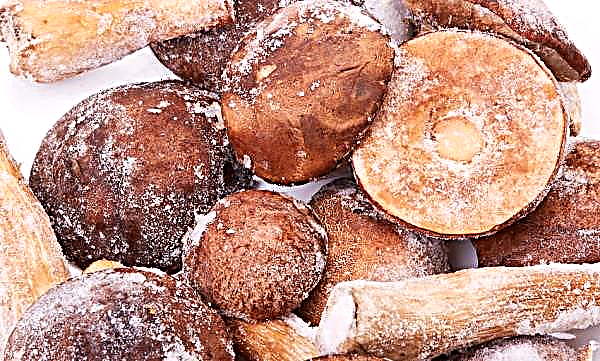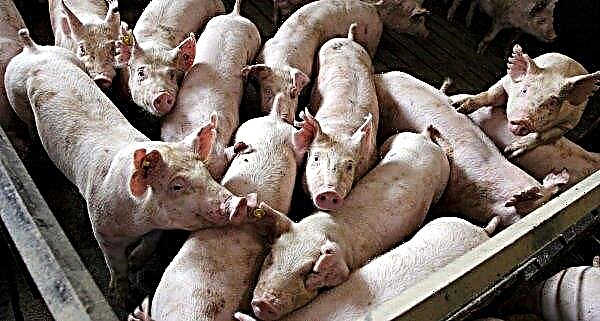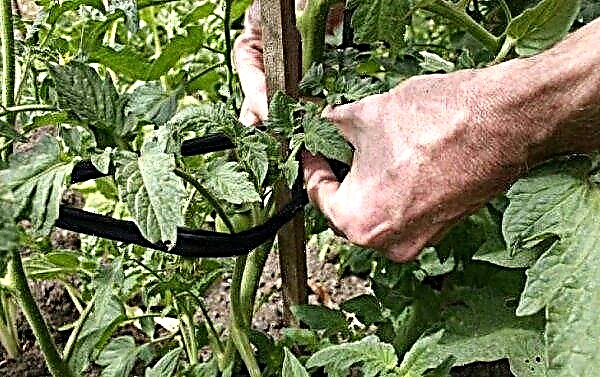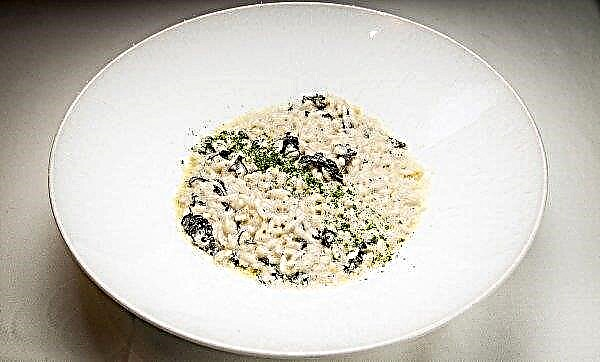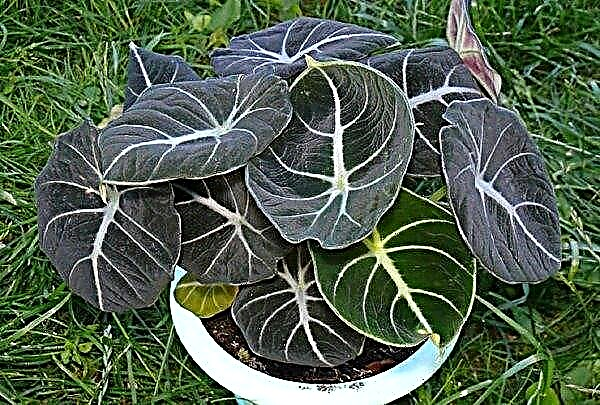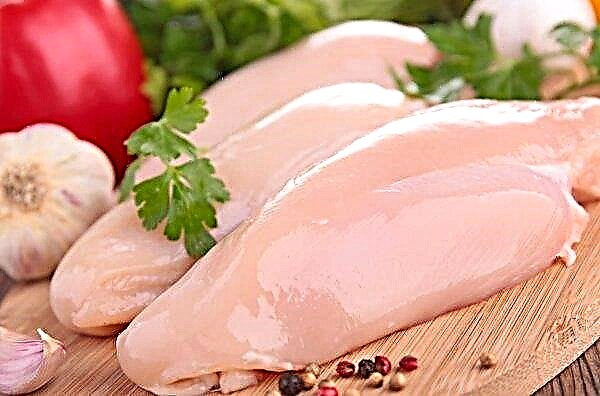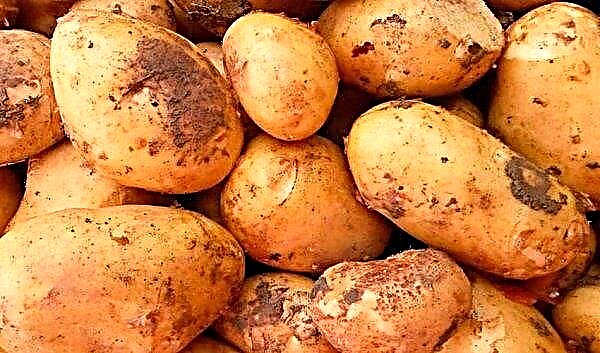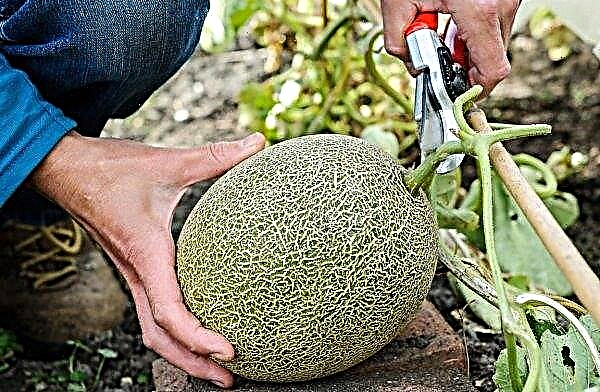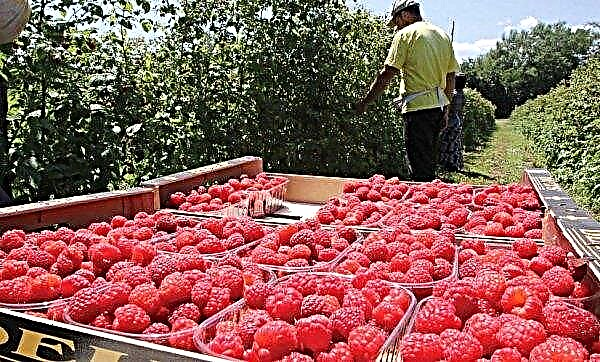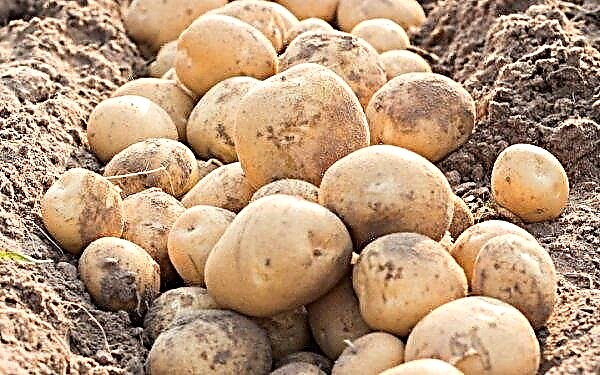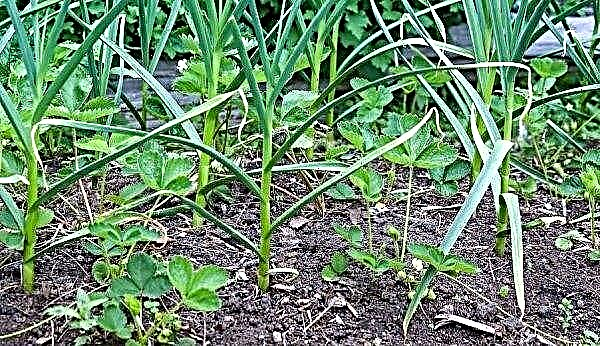Adenium is a beautiful exotic houseplant in the form of an unusual bush or tree. Modern hybrids also have luxurious flowering. The plant retains its beauty even during dormancy due to the trunk of an interesting shape having a thickening below (caudex). You can get various attractive forms from it, it is readily used in bonsai. About varieties of adenium, its cultivation at home will be discussed in this review.
The origin of the houseplant
Adeniums are succulent plants of a shrub (or woody) species. This genus in the wild grows in the tropics of the African continent in the territories between Senegal and the Arabian Peninsula. Some species grow in Kenya and southern Africa.
Types of Adenium
All species branch well and have small lanceolate leaves. Flowers are simple and double, the shades are different. The plant also has another, local, name - "desert rose." Adeniums are found with pink, yellow, white, dark red flowers, the middle of which is brighter than the edging.
Several varieties of the genus Adenium are known.Did you know? Adeniums secrete poisonous juice. They and the pollen of some varieties smeared arrowheads, and they become poisonous.
Arab
It grows on the outskirts of the Arabian Peninsula. It is characterized by a thickened stem, large fleshy leaves (up to 15 cm), abundant flowering of small pink flowers and good branching, which does not require any methods of crown formation. This is why they like to use Arabic adenium for bonsai. Occasionally, plants with white flowers are found.
This is why they like to use Arabic adenium for bonsai. Occasionally, plants with white flowers are found.
There are two subspecies - Saudi (in the lands of the Kingdom of Saudi Arabia) and Yemen (in the territory of Yemen). They differ in size and behavior in winter. The Saudi version in natural (or conditions close to them) can reach 4 m, its flowers are small (up to 4 cm), and the Yemeni one is lower, with flowers up to 8.5 cm in size.
Blossom all spring, and Saudi Adenium can throw flowers throughout the year. A species from Yemen retains foliage during the dormant period, and a plant of Arabian origin discards it.
In indoor conditions, the Arabian adenium grows no more than 0.5 m tall, but it is very wide-spread - it has a caudex of 30-40 cm. The plant is unpretentious.
Abesum (fat)
This beautifully flowering variety is found most often and has the widest distribution area, it is easy to care for. Now many varieties of abesum have been bred with very different colors of flowers with a diameter of usually 6–7 cm, with different terry. Flowers may be smaller, but in some varieties grow up to 14 cm. Leaves also come in different forms, are discarded during dormancy. Under natural conditions, the abesum reaches 1-3 m and has a large trunk diameter (up to 1 m), but as a houseplant grows small.
Flowers may be smaller, but in some varieties grow up to 14 cm. Leaves also come in different forms, are discarded during dormancy. Under natural conditions, the abesum reaches 1-3 m and has a large trunk diameter (up to 1 m), but as a houseplant grows small.
It is characterized by slow growth, early formation of caudex and flowering the very next year, even if the plant is obtained from seeds. It is also good for bonsai.
Did you know? Abesum perfectly took root in tropical countries such as Thailand, India, Malaysia and the Philippines, where selection is being actively conducted to breed the latest varieties and hybrids.
Somali
This plant forms a pronounced trunk and thin branches that bloom almost all year. In natural conditions it can grow up to 5 m, as it grows rapidly, but at home its size is limited by the size of the pot. It blooms in pink or red flowers with a size of 4-5 cm. Flowering begins early - a year and a half after the emergence of seedlings. A plant with narrow leaves 5-10 cm long in bright green color, on which white veins are visible. Dumps leaves in the winter.
It blooms in pink or red flowers with a size of 4-5 cm. Flowering begins early - a year and a half after the emergence of seedlings. A plant with narrow leaves 5-10 cm long in bright green color, on which white veins are visible. Dumps leaves in the winter.
Socotransky
The most rare type of andenium, growing on the island of Socotra (located in the Indian Ocean and belongs to Yemen). It has a short growing season, but in indoor conditions it may not discard foliage for the winter. Its large caudex is a composition of several fused trunks with transverse lines, at the top of which thin branches grow. It grows slowly, blooms very rarely during cultivation - pink flowers 10–13 cm in size.
Its large caudex is a composition of several fused trunks with transverse lines, at the top of which thin branches grow. It grows slowly, blooms very rarely during cultivation - pink flowers 10–13 cm in size.
This exotic plant in room conditions no longer forms an interesting trunk as often as in natural conditions.
Adenium boehmianum
It grows in some areas of Angola and Namibia. His other name is “Bushman poison”, as the local tribe greases them with arrows. The vegetation and flowering period is short, but it is extended under acceptable room conditions. It blooms 3-4 years after sprouting from the seeds and throws out a rounded-looking flowers of pink or lilac tones. It grows slowly and discards foliage during dormancy. The leaves themselves are green, large, up to 15 cm long (up to 8 cm wide), slightly wavy, with a thin edging and light veins.
It blooms 3-4 years after sprouting from the seeds and throws out a rounded-looking flowers of pink or lilac tones. It grows slowly and discards foliage during dormancy. The leaves themselves are green, large, up to 15 cm long (up to 8 cm wide), slightly wavy, with a thin edging and light veins.
Breeding methods
Adenium is usually propagated by seeds or cuttings.
Cuttings
Caudex in a plant obtained by this method appears only after some time. With this method, it is important to prevent rotting of planting material.
For propagation, the tops of the plant are used, obtained during its formation or cut off intentionally. Cuttings are cut and rooted during the growing season, but it is best to use the warmest time for this, cutting them with dimensions of 10-15 cm.
For their successful rooting, you need a lot of sun and a temperature regime of 25–35 ° C. Otherwise, these conditions will have to be created artificially. It is best to choose a stalk from a healthy plant in the growth phase with the presence of leaves. In the process of rooting, the leaves feed the cuttings, and then fall off.
Important! Do not immerse cuttings for rooting in water - this method usually leads to its decay.
The cut material is sprinkled with charcoal and dried. A young stalk can be kept unplanted for only half an hour, until the juice dries in the place of cut, then it is urgently planted. More mature and thicker branches last 1–2 days. It is best to root in containers with expanded clay, perlite or use as a substrate a mixture of sand with charcoal or sphagnum. There must be drainage holes. The shank should be deepened into a moist substrate by 50 mm and sprinkled around with sand to protect the root of the neck from rot.
It is best to root in containers with expanded clay, perlite or use as a substrate a mixture of sand with charcoal or sphagnum. There must be drainage holes. The shank should be deepened into a moist substrate by 50 mm and sprinkled around with sand to protect the root of the neck from rot.
Put in a well-lit place and moisten the soil with water to a wet (but not wet) state. For the greenhouse effect, it is recommended to cover with a transparent bag.
Rooting usually occurs within a few weeks, and cuttings begin to form new leaves.
Sowing seeds
A plant from seeds forms a thickening faster at the bottom of the trunk and usually blooms in a year or two. Such propagation does not guarantee the preservation of varietal characters if planting material was taken from hybrids.
For sowing, you can use a warm period to worry less about creating optimal conditions for growth. A loose, well-permeable substrate is used as a substrate.
For instance:
- from sand, perlite and crushed charcoal in a ratio of 1: 1: 1;
- from the same parts of perlite and peat moss;
- purchased soil for cacti and succulents.
First, the seeds are incubated for half an hour in a weak solution of manganese and then distributed over the surface of the substrate. Sprinkle on top a little, cover with transparent polyethylene and put in a warm place. Ambient temperature should not be lower than 24 ° С. It is optimal if it is in the range of 28–33 ° С. Periodically airing and watering.
Ambient temperature should not be lower than 24 ° С. It is optimal if it is in the range of 28–33 ° С. Periodically airing and watering.
At first, gentle shoots are protected from direct sunlight and do not allow a decrease in temperature below 18 ° C. If necessary, the seedlings are lightened so that the daylight hours are not less than 12 hours.
Then, when the plant gives the first pair of leaves, they begin to accustom it to the sun, and after the appearance of the second pair, they are transplanted into pots with a diameter of at least 5 cm, which, as they grow, change to larger ones.
Important! Adenium seeds quickly (within 6-8 months) lose their germination. Fresh seeds under optimal conditions germinate 80-100%.
Care and necessary conditions for growing a house
Adeniums are considered heat-loving plants, and they have a dormant period with a decrease in temperature and dropping foliage. Like all succulents, they are unpretentious, but they must be properly looked after, because otherwise they can rot. Watering is carried out as the soil dries.
Particular attention must be paid to proper molding in order to obtain interesting shapes. You can plant and transplant the plant during the growing season, but the best time is from late spring to early summer.
Soil and top dressing
For adeniums, one should choose a light, loose, well-permeable soil mixture containing nutrients, most of the loosening particles and with soil acidity in the range of 5.5–7 pH. You can make the mixture yourself, or you can buy ready-made for succulents and add baking powder to it. When preparing the soil mixture, you must take the following components:
When preparing the soil mixture, you must take the following components:
- peat or coconut fiber - 50-60%;
- nutrient soil - 20-30%;
- baking powder (river sand, vermiculite, perlite) - 10-30%.
It is recommended to add charcoal to this soil mixture, and as a nutritious soil it is best to take sod-leaf soil from under deciduous trees.
With a lack of nutrients for plants, you can make organic fertilizers based on bird droppings or complex mineral fertilizers with the obligatory presence of nitrogen, phosphorus and potassium in them.
You yourself choose what to feed (with organic or minerals), but keep in mind that during the growing season fertilizers are applied 1-2 per week, and during dormancy - only once a month or even less.
Optimum temperature and humidity
Adenium prefers a hot climate and feels comfortable at a temperature of 25–35 ° C in the summer. In the warm period, it can decorate any household plot, but it must be protected from precipitation, since excess moisture can cause decay.
This desert plant can easily tolerate heat up to + 42 ° C, but subject to increased moisture. But in cold weather they recommend a temperature regime in the range of + 12– + 16 ° C, watering is reduced. At temperatures below + 10 ° C, adenium may die.
Did you know? It is noticed that if you skip watering a little or undercuts, then adeniums form a caudeks better.
This plant can not be sprayed, and in room conditions it needs enough moderate moisture. The main thing is that there is no stagnation of water.
Light mode
Adeniums are very fond of good lighting, so they need to be placed on the windowsill overlooking the south. In the hot season, the plant should be shaded a little or transferred to less lighted windows, as direct rays of the sun can cause burns on the trunk (this is not necessary in the conditions of a hot summer). In spring, the plant is not immediately accustomed to the sun.
It is best for the plant to provide daylight at 12-14 hours. If the light is less than 10 hours, it will not bloom. With a lack of light, the adenium is greatly extended and loses its decorative appearance.
To prevent this, the plant must be illuminated with a fluorescent lamp or phytolamp, placing them on top of the plant. During rest, illumination can not be used.
The plant stretches towards the sun and slightly bends. To straighten the trunk, it is recommended to turn it in the opposite direction - it responds well to such changes.
Trimming and shaping a bush
Forming adeniums, you can get interesting forms using different techniques.
Removal of the apical kidney, even during the period of active growth, does not always cause lateral branching in some varieties (for example, in abesum). For the formation of branching, pruning is more effective, which is usually done in a fairly adult plant that already has a caudex.
The bush is trimmed after a dormant period in the spring before the onset of the vegetative period. Pruning is optional, but it is needed to form a bush if you want to give the appearance of a tree (1 trunk) or a bush (several trunks). To turn into a pretty tree, adenium is cut no more than 1/3 of the entire height, and for the formation of the shape of a bush, pruning is carried out lower on all branches. Old specimens with elongated branches that do not differ in flowering are performed anti-aging pruning.
To turn into a pretty tree, adenium is cut no more than 1/3 of the entire height, and for the formation of the shape of a bush, pruning is carried out lower on all branches. Old specimens with elongated branches that do not differ in flowering are performed anti-aging pruning.
For adeniums, the most important is the molding of caudex. At a young age, pruning of the root root is used for better branching of the roots. If the roots of an adult plant look too out of the soil, then the plant should be carefully removed from the pot and trim their ends, and then return the adenium back.
To obtain a larger caudex, the plant is transplanted, slightly raising the underground part above the substrate.
There is also the formation of caudex in the form of an octopus, when the roots of a young rooted cuttings are spread to the side and a circle of thick film is placed under it, which does not allow the roots to grow down. The roots are bred on the sides and fixed with toothpicks.
To form interesting interweaving of roots, a young plant should be carefully removed from the pot approximately every six months and carefully interwoven with brittle roots.
Did you know? The size of the tank affects the formation of the trunk and the general appearance of the adenium. Growing in a shallow wide pot will result in a wider and squat trunk. In containers that are deeper or narrower, the plant will have a different shape. For species with a predominance of vertical growth, narrower and deeper containers should be used. In this case, take pots with a diameter slightly larger than the size of the root.
Transfer
If necessary, adeniums must be transplanted. The main reason for transplanting is that the flower has grown a lot and you need a bigger pot. It is enough to transplant young plants once a year, usually this is done in the spring at the beginning of the growing season. The root of adeniums is much larger than the ground part, therefore, for their transplantation, a container with a diameter of 2 times larger than the caudex is chosen. The growth of a large plant is often limited by a closer pot for it, and if a further increase is planned, then choose more spacious dishes.
The root of adeniums is much larger than the ground part, therefore, for their transplantation, a container with a diameter of 2 times larger than the caudex is chosen. The growth of a large plant is often limited by a closer pot for it, and if a further increase is planned, then choose more spacious dishes.
The pot should be chosen in light colors, so that the soil does not heat up in the hot period in the sun. It is advisable to make drainage from expanded clay or small brick fragments. Its permeability can be improved by covering it with sand of large fractions.
It should be borne in mind that the plant will not bloom until it restores brittle roots. When transplanting, try not to damage them and do not water immediately, let the damage to the roots dry. The older the plant, the less often it needs a transplant.
Rest period
In autumn, when daylight hours decrease and temperature drops, a difficult time for the plant sets in - a dormant period. Adenium begins to lose leaves. When kept in warm room conditions on a window on the sunny side, some varieties (for example, abesum) do not need a rest period, and it retains part of its leaves, often blooms.
However, to ensure more magnificent flowering, wintering must be observed.
In different types of adenium, this time occurs in different ways. So, in Adenium boehmianum, the dormant period is usually complete or partial, when only the growth of shoots slows down, and the leaves do not fall. Certain specimens bloom for the first time only at this time, subject to the correct care conditions (Somali).
For the rest period, it is desirable to ensure a temperature of + 11–16 ° C, not lower than + 10 ° C. Watering should be significantly reduced and reduced (or cancel fertilizer application).If the living conditions in the cold season are warmer, then watering should not be sharply reduced and stopped. Experts advise to adhere to the following recommendations when keeping adeniums during rest:
Experts advise to adhere to the following recommendations when keeping adeniums during rest:
- young plants (seedlings) should be moderately periodically watered;
- adult specimens need to be watered about once every 4 weeks;
- if the temperature was 10–15 ° C, and watering was not carried out, then you must not miss the completion of the “wintering”. To this end, the flower pot is moved to a bright place and the appearance of buds is monitored. Watering should be on 14-21 days after waking the plant. First, water a little, then gradually increase watering.
Important! Sometimes the leaves of the adenium begin to turn yellow and fall after flowering due to improper care or a sharp change in weather conditions, but the plant continues to form new ones. It is not necessary to confuse such moments with the period of rest. Watering should continue.
Growing difficulties
Plant problems often arise from a shortage or excess of nutrients.
It can be:
- nitrogen. Its deficiency causes yellowness on the leaves and their fall in the lower part, growth retardation; the color begins to lighten, and the plant becomes frail in appearance. Excess nitrogen causes softening of large leaves, rapid growth and increase between nodes. The immune system suffers from an excess of this element, which can lead to the appearance of rot and other diseases;
- potassium. With a lack of it, burns appear along the edges of the sheet (with further drilling and twisting). The main symptom is a light border throughout the sheet. Excess potassium leads to the appearance of pale mosaic spots in the veins of foliage;
- phosphorus. The lack contributes to the occurrence of deformation processes and the appearance of brown spots on the leaves. The plant is affected initially in the lower part, and then completely. Growth and flowering are slowed down. With an increased phosphorus content in the soil, excessive adenium growth occurs, especially when nitrogen is also exceeded;
- magnesium. Its deficiency is manifested in the processes of chlorosis along the edges of leaves. Over time, the entire leaf undergoes chlorosis, but large veins remain green. Between them, yellowness may appear over time. Leaves at the edges gradually curl up and die. External signs of excess magnesium are not visible, but with such a problem, the level of assimilation of calcium and potassium by the flower decreases;
- calcium. A large excess of calcium in the soil leads to the impossibility of assimilation of phosphorus, magnesium, iron, boron and other elements, as well as to disruption of the activity of beneficial microorganisms in the soil. This can cause spots on the leaves and in the deformation processes of the leaves. A lack of calcium is manifested in burns along the edges of the leaves, young leaves lose their color and curl, become smaller;
- boron. Its disadvantage contributes to the deformation process on the sheet - twisting;
- copper. Shortage leads to weak flowering, leaves become small, seed pods are deformed;
- zinc. Its deficiency usually occurs in large adeniums. Plant growth slows down, new leaves are initially smaller, and seed pods undergo deformation and turn yellow;
- iron. A lack causes foliage chlorosis and often occurs when the root system is damaged.
 To prevent a shortage of the necessary substances for feeding adeniums, agents with a large set of elements are chosen. It should be borne in mind that they poorly absorb any substances from soils with an alkaline reaction. Therefore, water during irrigation is sometimes recommended to acidify.
To prevent a shortage of the necessary substances for feeding adeniums, agents with a large set of elements are chosen. It should be borne in mind that they poorly absorb any substances from soils with an alkaline reaction. Therefore, water during irrigation is sometimes recommended to acidify.Waterlogging of the soil at low temperatures often leads to root rot. Let the land dry between waterings and do not water it with cold water.
Did you know? A rotten plant can be saved by cutting and rooting a stalk taken from a healthy part of the plant.
Another negative factor for adenium is pests.
There are relatively few of them:
- spider mite. Sources of infection can be soil and neighboring plants. With a large accumulation forms a web. Small yellow dots appear on the sheet, which are becoming more and more. When they are found, the leaves need to be wiped with a damp piece of soft tissue, remove the affected ones. The plant is then sprayed with an insecticidal preparation (Neoron, Omayt). Re-processing is done after 6 days. If necessary, it is repeated for the third time;
- aphid. Often, infection occurs during the summer when outdoors. If these parasites are found, the flower is treated with insecticidal agents or preparations containing phosphorus;
- mealybug. Leaves a cotton-like wax. Parasitizes in the leaf sinuses, and with extensive infection — and on the leaves. Sources of infection can be uncontaminated soil, infected seedlings. If such insect pests are found, the plant is removed from the pot, the soil is removed, and washed with running water. Then the adenium is immersed or sprayed with an insecticide containing cypermethrin. The next two treatments are carried out at intervals of one week. The plant is planted in a new soil subject to sterilization;
- root worm. It affects the roots and is expressed in a whitish coating on them. The defeat of such insects is not immediately visible - at first the leaves turn pale, then they begin to turn yellow. To cope with pests can means such as "Aktara", "Dantop", "Regent". It is necessary to water the soil with a solution of these drugs at least three times with an interval of 7-10 days;
- nematodes. There are no drugs or remedies against these harmful insects. If these pests are identified, it is better to destroy the plant;
- scaffolds, false shields. The source is contaminated soil and seedlings. When they are identified, the plant is removed from the pot, and soil residues are removed from the root system. Then treatment with an appropriate insecticide is required (Aktara, Aktelik). The plant is planted in a sterile new soil.
 Adeniums are very beautiful and interesting plants, from which you can quickly grow a flowering tree with caudex, similar to bonsai.
Adeniums are very beautiful and interesting plants, from which you can quickly grow a flowering tree with caudex, similar to bonsai.Important! Buying seed should only be from a trusted seller, as unscrupulous often just photoshop the image. So, on sale there are adeniums of nonexistent colors - blue, blue, purple, raspberry, black and orange, and sometimes the image of the plant is generally represented by flowers of other species.
You can form different decorative shapes. They need a dormant period that provides good flowering, but some varieties in indoor conditions can do without it.

